Our Journey with Dog Incontinence
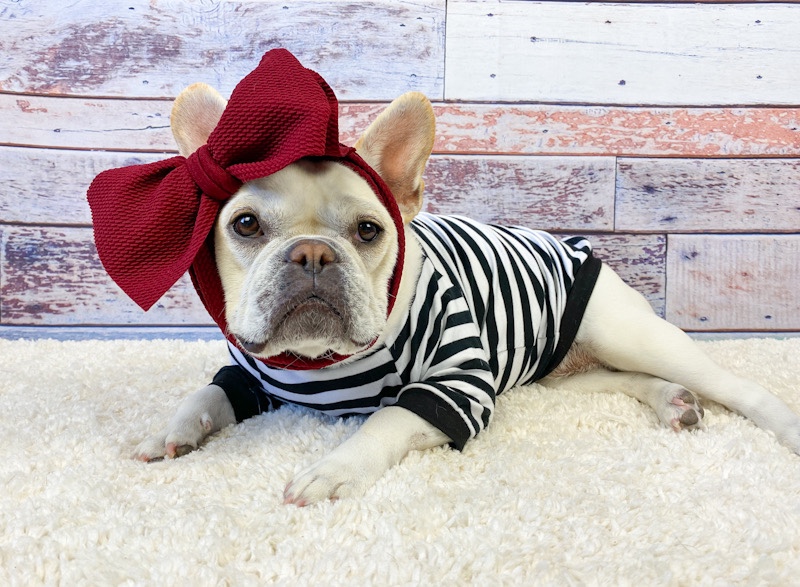
Our Story
Dog incontinence was never something I thought we would go through. And I must say, it wasn’t the most welcome of surprises. I grew up with dogs my entire life, all spayed or neutered, and had never come across this issue before.
With Zoe this came out of nowhere. She had never had any issues before. In fact, I called her my steel vault because she never had accidents after she was fully potty trained. It all started in the middle of May with a couple of accidents that I blamed on myself. The accidents were in her bed and her kennel. It was a lot of pee and she hadn’t gone outside right away after eating like normal. This was also after I started adding extra liquid into their breakfast and dinner to make sure they were getting an adequate amount of their dental supplement making contact with their teeth.
Note: she had this dental supplement as part of her diet for several months prior to this. But I had only been adding some of the water I mixed in the morning to their meals for a couple weeks.
But it seemed like she was trying to hide these accidents or that she didn’t have time to get out of her bed or kennel to try to get to the door. Because it was so out of character, I took a urine sample into the vet for urinalysis testing to make sure nothing was going on. It came back showing some bacteria like a UTI, so she was treated with antibiotics. At this point I also cut the amount of liquid I was adding down to half to make sure I was doing everything possible to help the situation. And things seemed like they were getting better after a couple days of treatment.

I did see some improvement from the bladder supplement. However, these kinds supplements are meant to help support overall kidney, bladder and urinary tract health. If your dog is incontinent this will not fix that.
A couple weeks later we had the most unpleasant accident of all. She has never, even as a puppy, had an accident in our bed. But one night we all got into bed and within a few minutes I was suddenly in a puddle of pee. So thankful for mattress protectors! She was awake for it, and I know she squatted for it because she wasn’t wet. So, after a quick shower and some late-night laundry I called the vet the next morning.
I spoke with my vet on the phone and at this time she didn’t believe that Zoe was incontinent because she was awake for all these accidents. We decided to do another urinalysis where they collected the urine directly from the bladder via needle just to be sure the initial UTI wasn’t back. A needle extraction is the only way to make sure that the sample is 100% sterile. This time I was able to go into the clinic with her. This urinalysis came back clean, which although it’s a good thing was frustrating since it gave us no answers. I also brought in our bladder supplements at this time to confirm that it had all the ingredients our vet would recommend. Thankfully, she said that the Zesty Paws looked great.
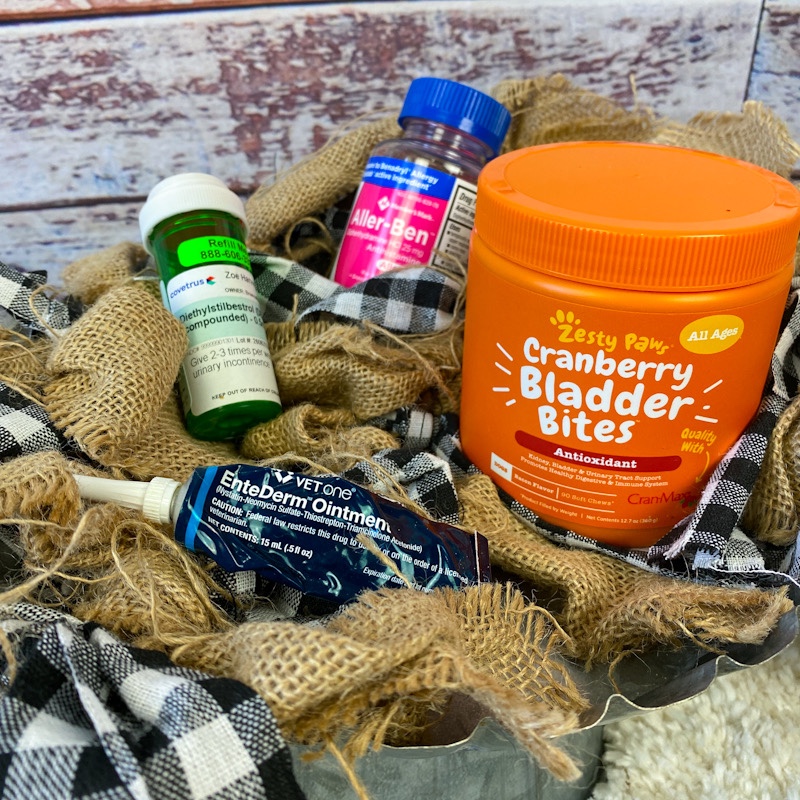
Please note: I am not a veterinarian and this post is not to be taken as medical advice. This is my personal experience having a dog who has been diagnosed with incontinence. While I hope this information is helpful to anyone experiencing bladder issues with their dog, if you think your dog may have a UTI or incontinence please seek veterinary care. This can be an uncomfortable or even painful experience for your fur baby and should be addressed right away. Only your veterinarian can give you a plan that is right for your dog. Background information on urinary issues in general (gathered through research and by speaking with our vet) will be listed after our story.
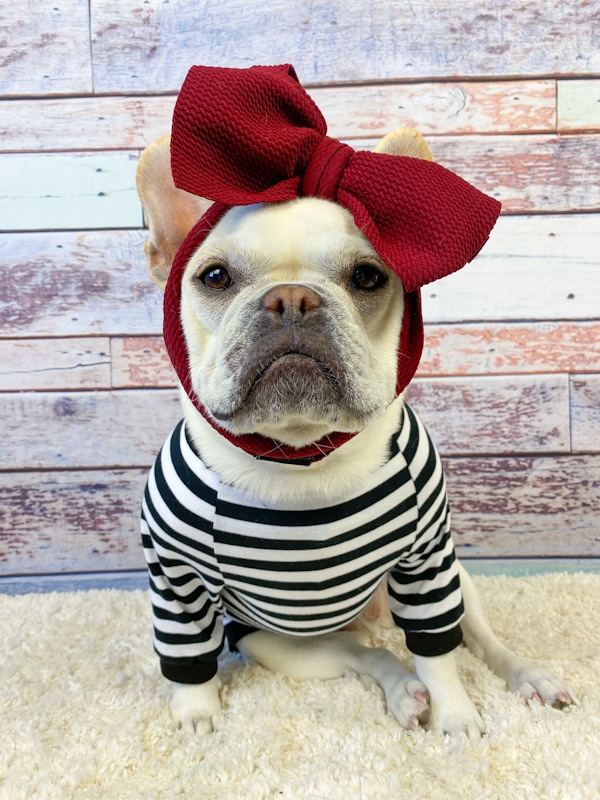
Unfortunately, after about a week or so she started scooting/rubbing herself on our rugs quite incessantly. Her vulva also looked red and swollen from all the rubbing. But she was acting normal other than that. French Bulldogs can’t reach to lick their privates, so scooting/rubbing can be their way of trying to address itching or other uncomfortable situations down there. She did this every once in a blue moon prior to this, but it seemed like every time I turned around, she was rocking on a rug.
So, this time I took her in to see the doctor. I collected a sample of her urine before we went in. Because of the pandemic I waited in the car while the doctor saw her. This time the urinalysis didn’t show any bacteria. The doctor said that her recessed vulva could be the problem. He gave me Panalog cream to apply to her vulva and recommended 1 25mg Benadryl a day for a few days to help assist with the redness and itching.
This helped reduce the scooting, which in turn, helped the redness and swelling of her vulva. However, she started to leak tiny bits of pee in between potty breaks. Since we already are firmly on the supplement train in this house, I immediately started googling to find a highly rated supplement for Zoe to see if this would help. I saw that Zesty Paws made a supplement called Cranberry Bladder Bites. It had great reviews and since I already get their salmon oil from Zesty Paws and believe in the company, I decided to go with that one. So many of the reviews said that it helped other pets stop minor leakage.
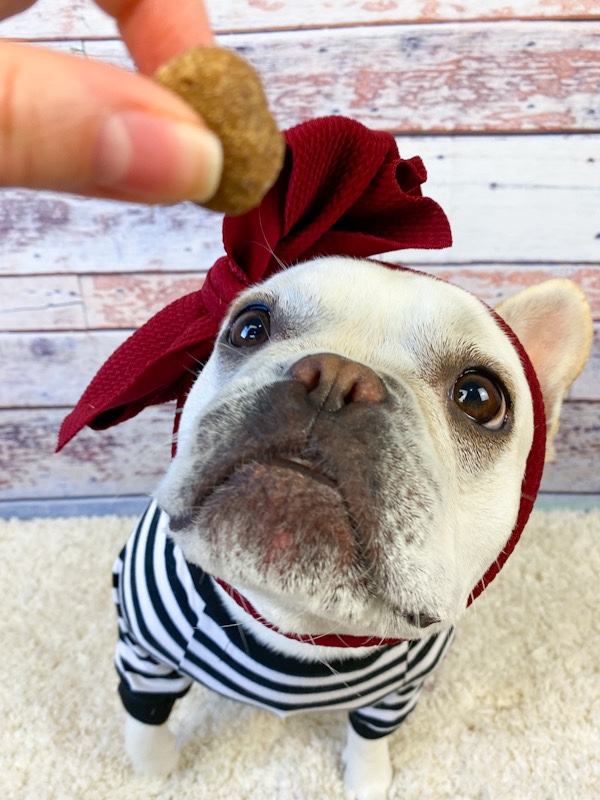
Within the next week or so Zoe took a turn for the worse. She began to have accidents in her sleep. This would happen when she was napping in her bed while I was working or on the couch with us watching TV. And to my husband’s dismay it happened while she was napping on him before her medication came in the mail. She would wake up and be very confused and upset over waking up wet. I called the vet right away and this confirmed for her that it wasn’t just minor bladder control loss due to aging but incontinence.
If felt like the end of the world at the time. No one wants to hear their baby is aging or incontinent. Thankfully, there are options. For Zoe, our vet recommended a very low dose of estrogen to balance her hormone loss. Because the dose is so low our vet said she hasn’t seen any side effects in the patients she has treated and that it is a very effective solution to the issue. It was such a low dose that we had to special order it, so it took about a week to come. Queue the very awkward accident she had on my husband and a decent amount of laundry.
Within just a couple of doses the accidents and minor leaking completely stopped. The rubbing stopped as well. Looking back, she probably had minor leaking making her itchy, causing the initial rubbing. But I didn’t notice any of the leaking until after she was being treated with the Panalog. Every dog’s situation is different, but I hope this story can help another pet parent trying to figure out a situation like this. It can be a very frustrating process.
What is Dog Incontinence?
Dog incontinence is when a housetrained dog loses control of their bladder. It is most common in spayed female dogs with about 5% to 20% developing the issue. The percentage gets higher with larger dogs as well. It is thought to be due to a lack of estrogen that can be caused by spaying. There can be many underlying conditions such as a hormonal imbalance (our situation), weak bladder sphincter, UTIs, urinary stones and prostate disorders to name a few.
Because there are so many causes there are many kinds of treatments. For us it was giving a very small dose of hormones three times a week. For others there could be possible injections or surgeries recommended, or it could be just managing the problem with diapers, more frequent potty break and proper hygiene to prevent related skin infections.
Types of Medical Conditions That Can Cause Urine Leakage
- UTIs (Urinary Tract Infection)
- Hormone Imbalance
- Bladder Stones
- Kidney Failure
- Diabetes
- Doggie Dementia (Canine Cognitive Dysfunction)
- And More…
Most Important Ingredients to Look for in a Bladder Supplement
- Cranberry: Can help prevent the adhesion of some strains of E. coli, the most common type of bacteria that causes UTIs in cats and dogs.
- D-Mannose: can help defend the lining of the urinary tract from bad bacteria. This was one ingredient that my vet said was specifically important for the bladder supplement to contain.

How To Collect A Urine Sample for Testing
It is most beneficial to collect a sample from their first potty of the morning. Collecting it at this time will help your vet see how your pet’s kidneys are working overnight. Make sure you collect the sample in a clean container.
I don’t know about you, but I have about a thousand extra Tupperware lids lying around. I find using one of these to be the easiest things to get under my girl to collect the sample since she is so low to the ground. Since boys pee a little further from the ground and will splash more, I would suggest using the actual Tupperware container for collection.
For the transportation container I have used an old Tupperware container with a leak proof lid or a disposable to go coffee cup with a little tape over the drink opening. Whatever you choose to use make sure you clearly label the container with your pet’s name and the time you collected the sample. You want to get the sample as close to the time of your appointment as you can. The sample begins to deteriorate after collection.
If you can’t get a sample from your pet yourself the vet can also do this for you through manual stimulation or needle collection. It isn’t as comfortable for your pet but is a good backup option if your pet gets stage freight or your appointment isn’t around a normal potty time.
The only option to get a fully sterile sample of urine is to have the vet collect it with a needle directly from the bladder. This isn’t usually the first option the vet would choose. For us, it was only suggested after two other urine tests with traditionally collected samples.
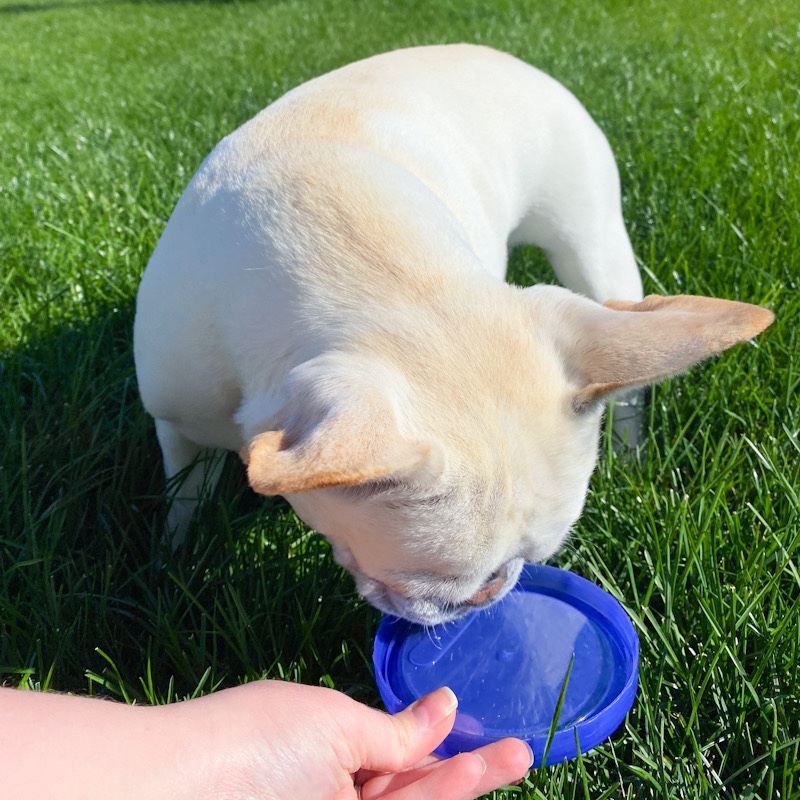
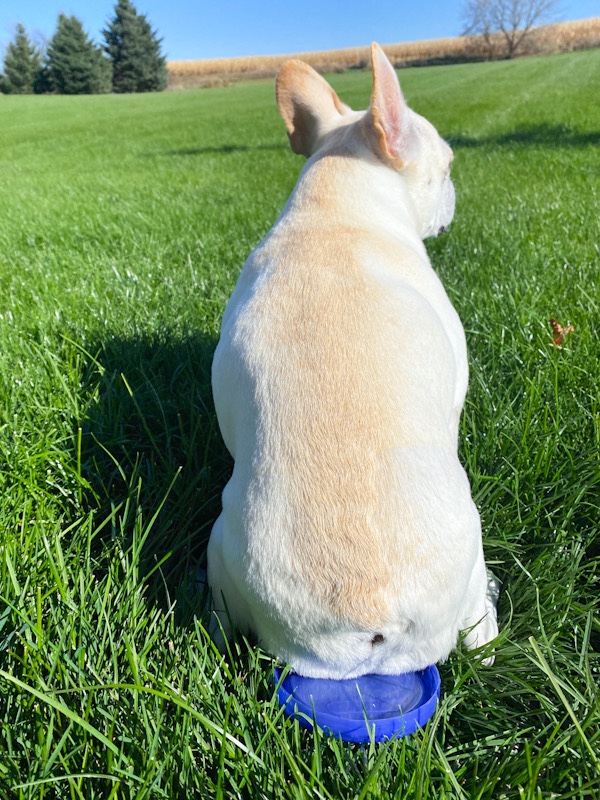
Our Journey with Dog Incontinence

Please note: I am not a veterinarian and this post is not to be taken as medical advice. This is my personal experience having a dog who has been diagnosed with incontinence. While I hope this information is helpful to anyone experiencing bladder issues with their dog, if you think your dog may have a UTI or incontinence please seek veterinary care. This can be an uncomfortable or even painful experience for your fur baby and should be addressed right away. Only your veterinarian can give you a plan that is right for your dog. Background information on urinary issues in general (gathered through research and by speaking with our vet) will be listed after our story.
Our Story
Dog incontinence was never something I thought we would go through. And I must say, it wasn’t the most welcome of surprises. I grew up with dogs my entire life, all spayed or neutered, and had never come across this issue before.
With Zoe this came out of nowhere. She had never had any issues before. In fact, I called her my steel vault because she never had accidents after she was fully potty trained. It all started in the middle of May with a couple of accidents that I blamed on myself. The accidents were in her bed and her kennel. It was a lot of pee and she hadn’t gone outside right away after eating like normal. This was also after I started adding extra liquid into their breakfast and dinner to make sure they were getting an adequate amount of their dental supplement making contact with their teeth.
Note: she had this dental supplement as part of her diet for several months prior to this. But I had only been adding some of the water I mixed in the morning to their meals for a couple weeks.
But it seemed like she was trying to hide these accidents or that she didn’t have time to get out of her bed or kennel to try to get to the door. Because it was so out of character, I took a urine sample into the vet for urinalysis testing to make sure nothing was going on. It came back showing some bacteria like a UTI, so she was treated with antibiotics. At this point I also cut the amount of liquid I was adding down to half to make sure I was doing everything possible to help the situation. And things seemed like they were getting better after a couple days of treatment.

Unfortunately, after about a week or so she started scooting/rubbing herself on our rugs quite incessantly. Her vulva also looked red and swollen from all the rubbing. But she was acting normal other than that. French Bulldogs can’t reach to lick their privates, so scooting/rubbing can be their way of trying to address itching or other uncomfortable situations down there. She did this every once in a blue moon prior to this, but it seemed like every time I turned around, she was rocking on a rug.
So, this time I took her in to see the doctor. I collected a sample of her urine before we went in. Because of the pandemic I waited in the car while the doctor saw her. This time the urinalysis didn’t show any bacteria. The doctor said that her recessed vulva could be the problem. He gave me Panalog cream to apply to her vulva and recommended 1 25mg Benadryl a day for a few days to help assist with the redness and itching.

This helped reduce the scooting, which in turn, helped the redness and swelling of her vulva. However, she started to leak tiny bits of pee in between potty breaks. Since we already are firmly on the supplement train in this house, I immediately started googling to find a highly rated supplement for Zoe to see if this would help. I saw that Zesty Paws made a supplement called Cranberry Bladder Bites. It had great reviews and since I already get their salmon oil from Zesty Paws and believe in the company, I decided to go with that one. So many of the reviews said that it helped other pets stop minor leakage.
I did see some improvement from the bladder supplement. However, these kinds supplements are meant to help support overall kidney, bladder and urinary tract health. If your dog is incontinent this will not fix that.

A couple weeks later we had the most unpleasant accident of all. She has never, even as a puppy, had an accident in our bed. But one night we all got into bed and within a few minutes I was suddenly in a puddle of pee. So thankful for mattress protectors! She was awake for it, and I know she squatted for it because she wasn’t wet. So, after a quick shower and some late-night laundry I called the vet the next morning.
I spoke with my vet on the phone and at this time she didn’t believe that Zoe was incontinent because she was awake for all these accidents. We decided to do another urinalysis where they collected the urine directly from the bladder via needle just to be sure the initial UTI wasn’t back. A needle extraction is the only way to make sure that the sample is 100% sterile. This time I was able to go into the clinic with her. This urinalysis came back clean, which although it’s a good thing was frustrating since it gave us no answers. I also brought in our bladder supplements at this time to confirm that it had all the ingredients our vet would recommend. Thankfully, she said that the Zesty Paws looked great.

Within the next week or so Zoe took a turn for the worse. She began to have accidents in her sleep. This would happen when she was napping in her bed while I was working or on the couch with us watching TV. And to my husband’s dismay it happened while she was napping on him before her medication came in the mail. She would wake up and be very confused and upset over waking up wet. I called the vet right away and this confirmed for her that it wasn’t just minor bladder control loss due to aging but incontinence.
If felt like the end of the world at the time. No one wants to hear their baby is aging or incontinent. Thankfully, there are options. For Zoe, our vet recommended a very low dose of estrogen to balance her hormone loss. Because the dose is so low our vet said she hasn’t seen any side effects in the patients she has treated and that it is a very effective solution to the issue. It was such a low dose that we had to special order it, so it took about a week to come. Queue the very awkward accident she had on my husband and a decent amount of laundry.
Within just a couple of doses the accidents and minor leaking completely stopped. The rubbing stopped as well. Looking back, she probably had minor leaking making her itchy, causing the initial rubbing. But I didn’t notice any of the leaking until after she was being treated with the Panalog. Every dog’s situation is different, but I hope this story can help another pet parent trying to figure out a situation like this. It can be a very frustrating process.
What is Dog Incontinence?
Dog incontinence is when a housetrained dog loses control of their bladder. It is most common in spayed female dogs with about 5% to 20% developing the issue. The percentage gets higher with larger dogs as well. It is thought to be due to a lack of estrogen that can be caused by spaying. There can be many underlying conditions such as a hormonal imbalance (our situation), weak bladder sphincter, UTIs, urinary stones and prostate disorders to name a few.
Because there are so many causes there are many kinds of treatments. For us it was giving a very small dose of hormones three times a week. For others there could be possible injections or surgeries recommended, or it could be just managing the problem with diapers, more frequent potty break and proper hygiene to prevent related skin infections.
Types of Medical Conditions That Can Cause Urine Leakage
- UTIs (Urinary Tract Infection)
- Hormone Imbalance
- Bladder Stones
- Kidney Failure
- Diabetes
- Doggie Dementia (Canine Cognitive Dysfunction)
- And More…
Most Important Ingredients to Look for in a Bladder Supplement
- Cranberry: Can help prevent the adhesion of some strains of E. coli, the most common type of bacteria that causes UTIs in cats and dogs.
- D-Mannose: can help defend the lining of the urinary tract from bad bacteria. This was one ingredient that my vet said was specifically important for the bladder supplement to contain.

How To Collect A Urine Sample for Testing
It is most beneficial to collect a sample from their first potty of the morning. Collecting it at this time will help your vet see how your pet’s kidneys are working overnight. Make sure you collect the sample in a clean container.
I don’t know about you, but I have about a thousand extra Tupperware lids lying around. I find using one of these to be the easiest things to get under my girl to collect the sample since she is so low to the ground. Since boys pee a little further from the ground and will splash more, I would suggest using the actual Tupperware container for collection.
For the transportation container I have used an old Tupperware container with a leak proof lid or a disposable to go coffee cup with a little tape over the drink opening. Whatever you choose to use make sure you clearly label the container with your pet’s name and the time you collected the sample. You want to get the sample as close to the time of your appointment as you can. The sample begins to deteriorate after collection.
If you can’t get a sample from your pet yourself the vet can also do this for you through manual stimulation or needle collection. It isn’t as comfortable for your pet but is a good backup option if your pet gets stage freight or your appointment isn’t around a normal potty time.
The only option to get a fully sterile sample of urine is to have the vet collect it with a needle directly from the bladder. This isn’t usually the first option the vet would choose. For us, it was only suggested after two other urine tests with traditionally collected samples.


Momager
Latest posts by Momager (see all)
- Banana Blueberry Muttfins - January 7, 2021
- Our Top 7 Dog Supplement Recommendations - December 10, 2020
- Pumpkin Pup Pancakes - November 26, 2020
